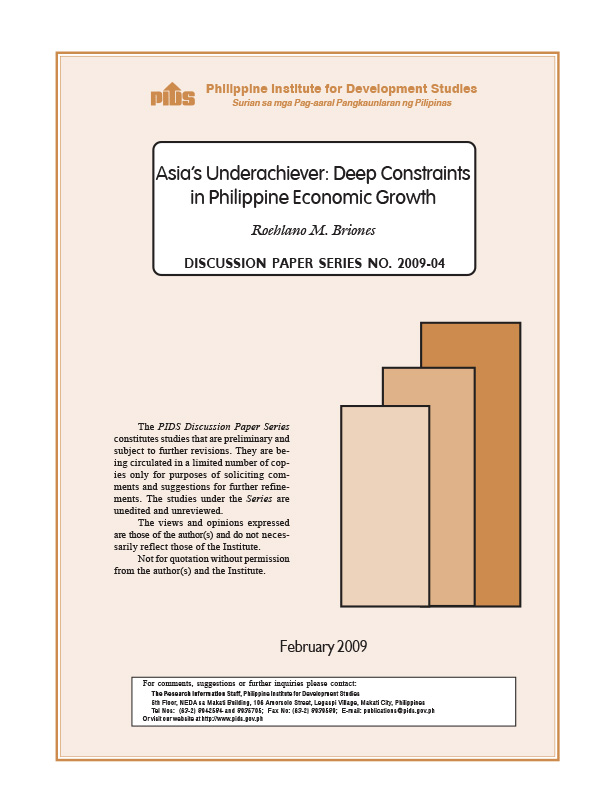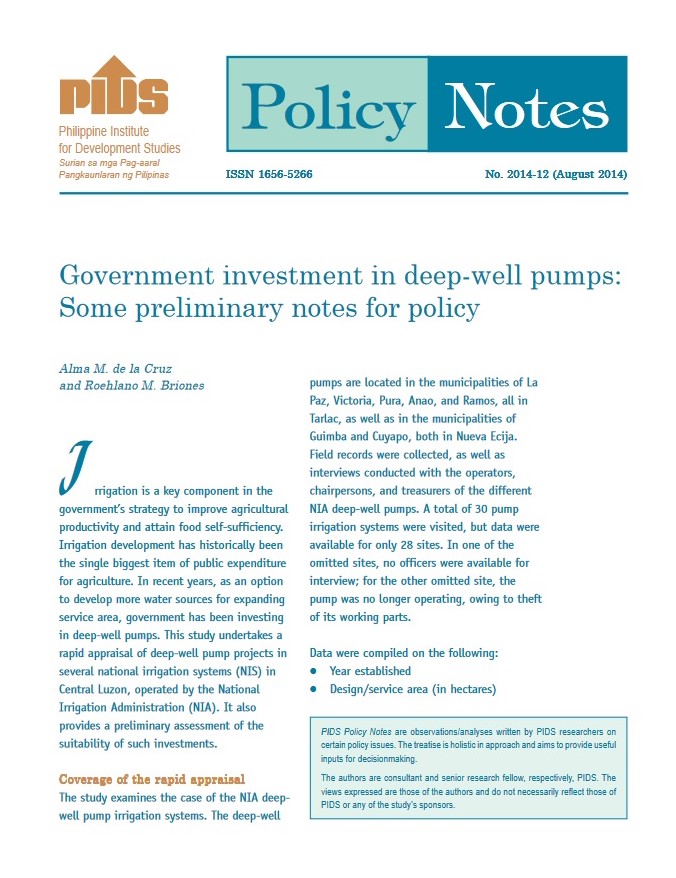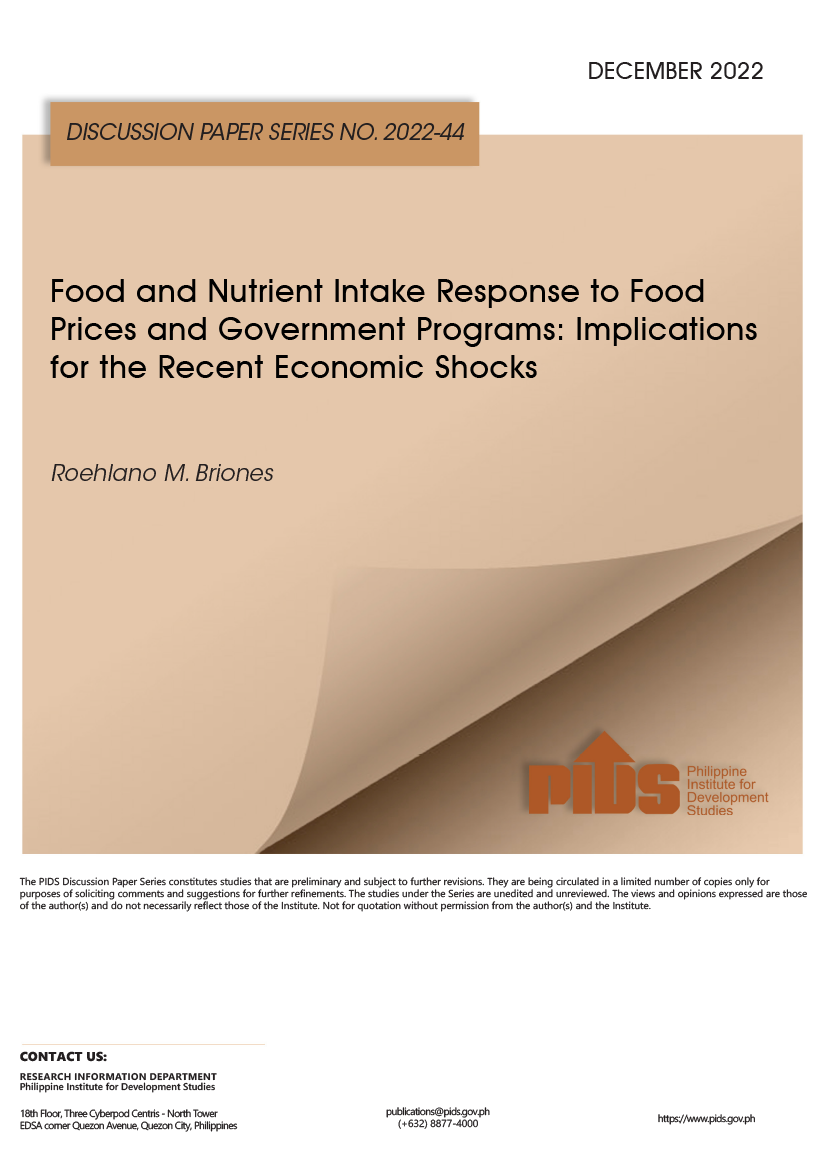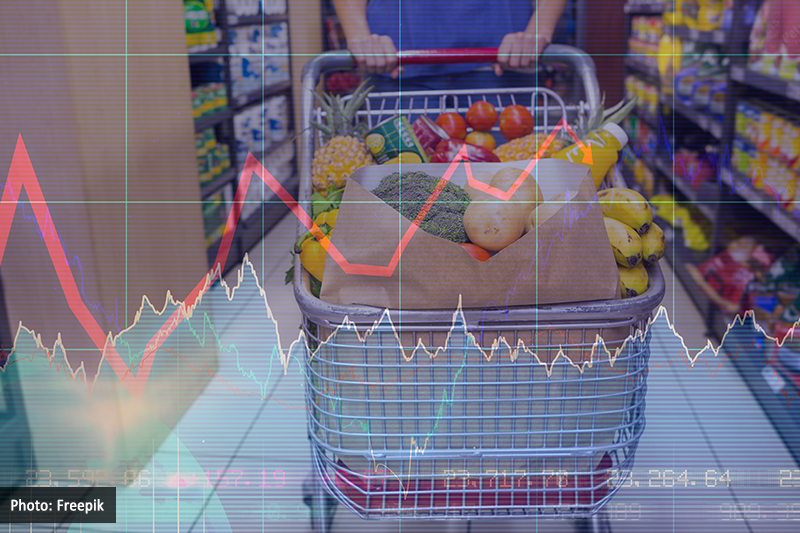THE National Economic and Development Authority (Neda) and local economists expect the economy to post a deep contraction in the second quarter this year due to the coronavirus 2019 (Covid-19) pandemic.
Neda Undersecretary Rosemarie G. Edillon told the BusinessMirror on Wednesday GDP could still post a growth just below the country’s historical average of 5 percent to 6 percent in the first quarter.
The full impact of the pandemic was felt toward March as the President placed Metro Manila on community quarantine which he subsequently expanded to the entire Luzon island with an enhanced community quarantine (ECQ). The ECQ was then extended to April 30.
“[Will GDP in Q1 and Q2 be negative?] Probably not in Q1,” Edillon said. “Hopefully, [Q1 GDP] will be just below the historical average.”
Ateneo Center for Economic Research and Development (ACERD) Director Alvin P. Ang said the contraction in the second quarter may reach double digits if the ECQ is extended.
This will be followed by another contraction in the third quarter, Ang said, marking a technical recession of the Philippine economy. A technical recession occurs when GDP growth contracts in two quarters.
The only factor that could complicate GDP growth in the third quarter will be the impact of La Niña on the economy. The third quarter is also, historically, typhoon season in the Philippines.
However, first- and fourth-quarter growths will be positive, with the fourth quarter allowing the economy to post its best GDP performance for the year.
“[The contraction in Q2 and Q3] depends on how long the enhanced community quarantine will be in effect,” Ang told the BusinessMirror. “[Growth will remain weak] until majority of industries are closed. [The growth in Q4] assumes that 50 percent of businesses become operational.”
For his part, economist Calixto V. Chikiamco said: “The government is projecting -1 percent growth in 2020. That means economic contraction in the first and second quarter. The magnitude of the contraction will depend on the size and timing of the economic relief and emergency fund of the government. As of now, only about 5 percent of GDP is being set aside compared to other countries like Malaysia at 15 percent of GDP and Thailand at 10 percent of GDP.”
Only 2nd quarter
University of Asia and the Pacific School of Economics Dean Cid Terosa told this newspaper that by his estimates, only the second quarter will post a negative growth this year.
Terosa is not as optimistic as the Neda, however, when it comes to first-quarter GDP growth—expecting it to be close to zero to as much as 2 percent in the April to June period.
“I don’t think there will be any [growth drivers] as long as the ECQ is in place. If the ECQ is lifted by the end of April, we can rely on domestic consumption spending and government pump priming to drive growth,” Terosa said.
Terosa said the La Niña phenomenon would likely take its toll on third-quarter GDP growth this year.
International organizations are predicting a La Niña weather event toward end-2020. For the Philippines, this could coincide with the rainy and/or typhoon season.
Nonetheless, Terosa said, July-September growth would likely be positive especially if the negative effects of the ECQ have waned and the pandemic is controlled.
“If the effects of La Niña are severe, it will hold back the positive effects of economic rebuilding activities and dampen economic growth,” Terosa said.
For his part, ING senior economist Nicholas T. Mapa sees first-quarter GDP at around 4 percent; while the second quarter would be close to negative at 0.2 percent growth.
The main drivers of growth, particularly for the second quarter, will be government spending and household consumption, given that Filipinos need to stock up on food and nonfood essentials while in quarantine.
Mapa said if the La Niña phenomenon occurs in the second half, this “may complicate a recovery as it hampers agriculture at a time growth prospects are at their most vulnerable.”
“Food takes up the lion’s share of household consumption in GDP accounting, and surging demand for this subcomponent may offset weakness in other sectors like capital formation,” Mapa said.
Worst recession since Great Depression
On Wednesday, the International Monetary Fund (IMF) released its estimates for Philippine GDP, which showed the economy will post a 0.6-percent growth this year before bouncing back to 7.6 percent in 2021.
Edillon said the Neda is aware of the growth forecast of the IMF and is now determining whether their assumptions are aligned with the government.
Growth this year is worse than the full-year GDP growth posted by the Philippine economy in 2009 during the Global Economic Crisis (GEC). GDP growth that year was at 1.1 percent with the third quarter posting the weakest growth at 0.5 percent.
However, the IMF’s projected growth is better than the contraction of 0.6 percent posted in 1998 when the Philippines experienced a severe El Niño. The fourth quarter posted the weakest growth that year with a contraction of 3.1 percent.
The IMF also estimated that inflation will be benign at 1.7 percent in 2020 and 2.9 percent next year. Earlier, this newspaper reported that low inflation is due to the slowdown in consumption of various food and nonfood commodities (See businessmirror.com.ph/2020/03/06/february-inflation-eases-on-slower-consumption/).
The IMF’s estimates also showed the country’s unemployment rate rising to 6.2 percent in 2020 before sliding back to 5.3 percent in 2021.
The Labor Force Survey (LFS) for April will be conducted next week and the results will be available in June 2020. In the January LFS round, the jobless rate was at 5.3 percent representing 2.39 million workers.
Due to the pandemic, the IMF revised its forecast for global GDP to a contraction of 3 percent this year, a 6.3-percentage-point decline from its January 2020 forecast.
“This makes the great lockdown the worst recession since the Great Depression, and far worse than the Global Financial Crisis,” IMF Research Department economic counselor and director Gita Gopinath said in a virtual briefing.
Gopinath said global growth will rebound to 5.8 percent in 2021 on the back of expectations the pandemic will fade in the second half of 2020. The forecast also considers the effective prevention of firm bankruptcies, extended job losses, and system-wide financial strains.
Death and tolls
On Tuesday evening, a team of Philippine Institute for Development Studies (PIDS) researchers led by research fellow Michael R.M. Abrigo estimated that the pandemic will cost the Philippine economy P276.3 billion to as much as P2.5 trillion.
The PIDS researchers said the transport, storage and communication sector is expected to suffer substantial losses due to tourism declines worth P11.7 billion to as much as P124.3 billion.
The study also showed that losses in other services could reach P41.5 billion to P356.9 billion; manufacturing, P82.1 billion to P855.2 billion; and wholesale and retail trade, P93.2 billion to P724.8 billion.
“Extending the ECQ by one more month may potentially cost the Philippine economy at least P150 billion due to possible declines in household consumption as workers remain unemployed for longer periods,” the researchers said.
However, Abrigo and the other researchers said the cost of inaction may be larger at P2 trillion in foregone gross value added. This will be due to weak household demand and unemployment of workers for extended periods of time.
The country’s Employment to Population Ratio (EPR) could decline by 12 percentage points to as much as 30 percentage points. With an EPR of 60 percent, the worst-case scenario means there could be a 50-percent reduction in the total number of workers nationwide.
In terms of infections and deaths, the researchers estimated that if the government does not put in place any interventions, around 18.9 million or nearly 20 percent of the Philippine population will be infected by August 2020.
Of this number, around 9.88 million will be considered mild cases; 3.39 million, severe; and 1.03 million, critical. The cumulative deaths estimated at peak day are at 1.66 million.
But under an extended ECQ, partial lifting of quarantine, better testing, and the symptomatic persons isolated at the onset, the total cases will peak in June if the ECQ is partially lifted for two weeks or May if it is partially lifted for four weeks with a total of 904,000 cases.
The results come as no surprise given that Hong Kong-based Deep Knowledge Group (DKG) said the Philippines is included in the top 10 high health and economic risks for Covid-19.
The framework of DKG measures risk using 24 indicators grouped in four major areas: infection spread; government management; health-care efficiency; and regional specific risks.
The countries in the top 10 are led by Italy followed by the United States, the United Kingdom, Spain, France, Sweden, Iran, Ecuador, the Philippines and Romania.
Other countries considered high risk are Nigeria, Russia, Bangladesh, Mexico, India, Sri Lanka, Indonesia, Myanmar, Cambodia and Laos.
Neda Undersecretary Rosemarie G. Edillon told the BusinessMirror on Wednesday GDP could still post a growth just below the country’s historical average of 5 percent to 6 percent in the first quarter.
The full impact of the pandemic was felt toward March as the President placed Metro Manila on community quarantine which he subsequently expanded to the entire Luzon island with an enhanced community quarantine (ECQ). The ECQ was then extended to April 30.
“[Will GDP in Q1 and Q2 be negative?] Probably not in Q1,” Edillon said. “Hopefully, [Q1 GDP] will be just below the historical average.”
Ateneo Center for Economic Research and Development (ACERD) Director Alvin P. Ang said the contraction in the second quarter may reach double digits if the ECQ is extended.
This will be followed by another contraction in the third quarter, Ang said, marking a technical recession of the Philippine economy. A technical recession occurs when GDP growth contracts in two quarters.
The only factor that could complicate GDP growth in the third quarter will be the impact of La Niña on the economy. The third quarter is also, historically, typhoon season in the Philippines.
However, first- and fourth-quarter growths will be positive, with the fourth quarter allowing the economy to post its best GDP performance for the year.
“[The contraction in Q2 and Q3] depends on how long the enhanced community quarantine will be in effect,” Ang told the BusinessMirror. “[Growth will remain weak] until majority of industries are closed. [The growth in Q4] assumes that 50 percent of businesses become operational.”
For his part, economist Calixto V. Chikiamco said: “The government is projecting -1 percent growth in 2020. That means economic contraction in the first and second quarter. The magnitude of the contraction will depend on the size and timing of the economic relief and emergency fund of the government. As of now, only about 5 percent of GDP is being set aside compared to other countries like Malaysia at 15 percent of GDP and Thailand at 10 percent of GDP.”
Only 2nd quarter
University of Asia and the Pacific School of Economics Dean Cid Terosa told this newspaper that by his estimates, only the second quarter will post a negative growth this year.
Terosa is not as optimistic as the Neda, however, when it comes to first-quarter GDP growth—expecting it to be close to zero to as much as 2 percent in the April to June period.
“I don’t think there will be any [growth drivers] as long as the ECQ is in place. If the ECQ is lifted by the end of April, we can rely on domestic consumption spending and government pump priming to drive growth,” Terosa said.
Terosa said the La Niña phenomenon would likely take its toll on third-quarter GDP growth this year.
International organizations are predicting a La Niña weather event toward end-2020. For the Philippines, this could coincide with the rainy and/or typhoon season.
Nonetheless, Terosa said, July-September growth would likely be positive especially if the negative effects of the ECQ have waned and the pandemic is controlled.
“If the effects of La Niña are severe, it will hold back the positive effects of economic rebuilding activities and dampen economic growth,” Terosa said.
For his part, ING senior economist Nicholas T. Mapa sees first-quarter GDP at around 4 percent; while the second quarter would be close to negative at 0.2 percent growth.
The main drivers of growth, particularly for the second quarter, will be government spending and household consumption, given that Filipinos need to stock up on food and nonfood essentials while in quarantine.
Mapa said if the La Niña phenomenon occurs in the second half, this “may complicate a recovery as it hampers agriculture at a time growth prospects are at their most vulnerable.”
“Food takes up the lion’s share of household consumption in GDP accounting, and surging demand for this subcomponent may offset weakness in other sectors like capital formation,” Mapa said.
Worst recession since Great Depression
On Wednesday, the International Monetary Fund (IMF) released its estimates for Philippine GDP, which showed the economy will post a 0.6-percent growth this year before bouncing back to 7.6 percent in 2021.
Edillon said the Neda is aware of the growth forecast of the IMF and is now determining whether their assumptions are aligned with the government.
Growth this year is worse than the full-year GDP growth posted by the Philippine economy in 2009 during the Global Economic Crisis (GEC). GDP growth that year was at 1.1 percent with the third quarter posting the weakest growth at 0.5 percent.
However, the IMF’s projected growth is better than the contraction of 0.6 percent posted in 1998 when the Philippines experienced a severe El Niño. The fourth quarter posted the weakest growth that year with a contraction of 3.1 percent.
The IMF also estimated that inflation will be benign at 1.7 percent in 2020 and 2.9 percent next year. Earlier, this newspaper reported that low inflation is due to the slowdown in consumption of various food and nonfood commodities (See businessmirror.com.ph/2020/03/06/february-inflation-eases-on-slower-consumption/).
The IMF’s estimates also showed the country’s unemployment rate rising to 6.2 percent in 2020 before sliding back to 5.3 percent in 2021.
The Labor Force Survey (LFS) for April will be conducted next week and the results will be available in June 2020. In the January LFS round, the jobless rate was at 5.3 percent representing 2.39 million workers.
Due to the pandemic, the IMF revised its forecast for global GDP to a contraction of 3 percent this year, a 6.3-percentage-point decline from its January 2020 forecast.
“This makes the great lockdown the worst recession since the Great Depression, and far worse than the Global Financial Crisis,” IMF Research Department economic counselor and director Gita Gopinath said in a virtual briefing.
Gopinath said global growth will rebound to 5.8 percent in 2021 on the back of expectations the pandemic will fade in the second half of 2020. The forecast also considers the effective prevention of firm bankruptcies, extended job losses, and system-wide financial strains.
Death and tolls
On Tuesday evening, a team of Philippine Institute for Development Studies (PIDS) researchers led by research fellow Michael R.M. Abrigo estimated that the pandemic will cost the Philippine economy P276.3 billion to as much as P2.5 trillion.
The PIDS researchers said the transport, storage and communication sector is expected to suffer substantial losses due to tourism declines worth P11.7 billion to as much as P124.3 billion.
The study also showed that losses in other services could reach P41.5 billion to P356.9 billion; manufacturing, P82.1 billion to P855.2 billion; and wholesale and retail trade, P93.2 billion to P724.8 billion.
“Extending the ECQ by one more month may potentially cost the Philippine economy at least P150 billion due to possible declines in household consumption as workers remain unemployed for longer periods,” the researchers said.
However, Abrigo and the other researchers said the cost of inaction may be larger at P2 trillion in foregone gross value added. This will be due to weak household demand and unemployment of workers for extended periods of time.
The country’s Employment to Population Ratio (EPR) could decline by 12 percentage points to as much as 30 percentage points. With an EPR of 60 percent, the worst-case scenario means there could be a 50-percent reduction in the total number of workers nationwide.
In terms of infections and deaths, the researchers estimated that if the government does not put in place any interventions, around 18.9 million or nearly 20 percent of the Philippine population will be infected by August 2020.
Of this number, around 9.88 million will be considered mild cases; 3.39 million, severe; and 1.03 million, critical. The cumulative deaths estimated at peak day are at 1.66 million.
But under an extended ECQ, partial lifting of quarantine, better testing, and the symptomatic persons isolated at the onset, the total cases will peak in June if the ECQ is partially lifted for two weeks or May if it is partially lifted for four weeks with a total of 904,000 cases.
The results come as no surprise given that Hong Kong-based Deep Knowledge Group (DKG) said the Philippines is included in the top 10 high health and economic risks for Covid-19.
The framework of DKG measures risk using 24 indicators grouped in four major areas: infection spread; government management; health-care efficiency; and regional specific risks.
The countries in the top 10 are led by Italy followed by the United States, the United Kingdom, Spain, France, Sweden, Iran, Ecuador, the Philippines and Romania.
Other countries considered high risk are Nigeria, Russia, Bangladesh, Mexico, India, Sri Lanka, Indonesia, Myanmar, Cambodia and Laos.






